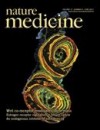 Thirty years ago this month, scientists first reported the existence of AIDS, and in the intervening decades researchers have focused steady efforts on prevention, long-term treatments such as antiretroviral drugs, and patient care. What has fallen in and out of fashion during that time is seeking a ‘cure’ for HIV. That changed when scientists reported that they had cured one man of the virus through a bone marrow transplant (Blood 117, 2791–2799, 2011). But the circumstances of that 2007 transplant were unique, and researchers say they are uncertain about how to fund additional cure-directed research without cannibalizing other components of the global HIV/AIDS research machine.
Thirty years ago this month, scientists first reported the existence of AIDS, and in the intervening decades researchers have focused steady efforts on prevention, long-term treatments such as antiretroviral drugs, and patient care. What has fallen in and out of fashion during that time is seeking a ‘cure’ for HIV. That changed when scientists reported that they had cured one man of the virus through a bone marrow transplant (Blood 117, 2791–2799, 2011). But the circumstances of that 2007 transplant were unique, and researchers say they are uncertain about how to fund additional cure-directed research without cannibalizing other components of the global HIV/AIDS research machine.
“That’s the tricky part,” says Bertrand Audoin, executive director of the International AIDS Society (IAS), a Geneva-based HIV research and education association. “Actually, to be honest, I’m glad it’s not for me to decide.”
To address the issue, the IAS has invited a working group to its biennial research meeting in Rome this July to hash out ideas about how to include cure research within the existing framework of HIV/AIDS studies. “Our goal after the Rome meeting is to have enough scientific ideas to reach out to new donors,” Audoin says, though they will only ask for pledges this year. Funding requests for specific avenues of cure research will have to wait until the working group releases a more formal scientific strategy at the July 2012 meeting in Washington, DC.
So far, funding earmarked for cure research is a tiny fraction of overall HIV/AIDS spending, says David Margolis, a virologist at the University of North Carolina at Chapel Hill and a member of the IAS working group. The US National Institutes of Health (NIH) is funding cure-related research to the tune of $13 million a year out of its $3.5 billion annual AIDS research budget, with the Bill & Melinda Gates Foundation and the California Institute for Regenerative Medicine contributing comparable amounts. The Rome meeting should help researchers nail down “several specific areas or projects that should be developed,” Margolis says. The AIDS Policy Project, an advocacy group in Philadelphia, has been lobbying for the NIH to raise its investment in cure research to $240 million a year.
Cure-related research takes various forms. As researchers have grown better at suppressing HIV activity with antiretroviral drugs, they are now reaching for other tools that might draw out the virus from its cellular hiding places in order to destroy it. Margolis and his colleagues, including Daria Hazuda of the drug giant Merck, have patented a therapy using a leukemia drug called Zolinza (vorinostat) because it forces dormant, HIV-hosting immune cells into dividing and exposes the virus to a possible sterilizing cure. “Purging is going to be one approach, but there are going to be others,” says immunologist James Hoxie of the University of Pennsylvania School of Medicine in Philadelphia, including gene therapy that modifies a patient’s immune system with mutant genes that help keep HIV under control, without antiretroviral drugs. “The people who control funding need to take advantage of extraordinary events,” such as the successful gene therapy reported in Blood, Hoxie says. “This should encourage additional funding, not remove it from other programs.”
Deenan Pillay, a virologist at University College London, argues that the idea of clearing HIV in the body head on, which has not been accomplished with any other virus, is “nice to rationalize by saying it’s more cost effective” than lifelong antiretroviral treatment. “But the big issue in HIV is not necessarily eradication versus treatment but rather making the benefits of treatment available worldwide,” he says. Achieving either one will require prioritization. “If we want to do it properly, the best way is not to look at who can give more money,” Audoin says, “but first to agree on what the scientific strategy should be and what we really want to achieve.”